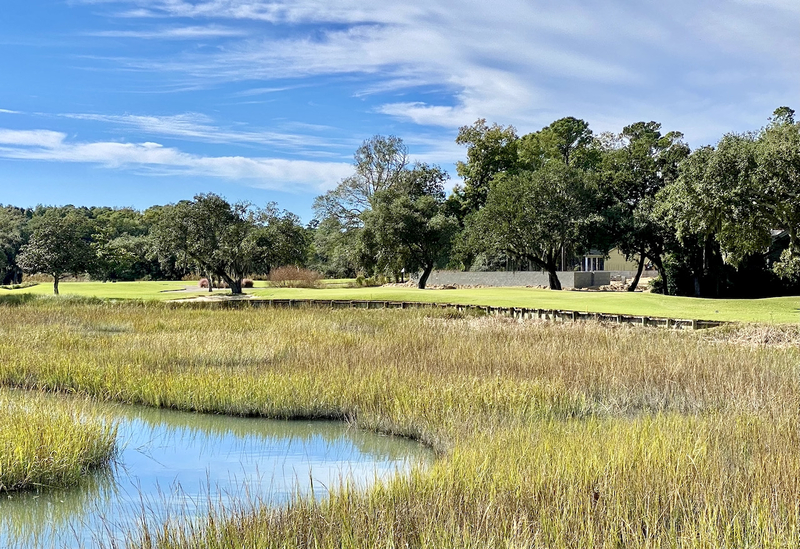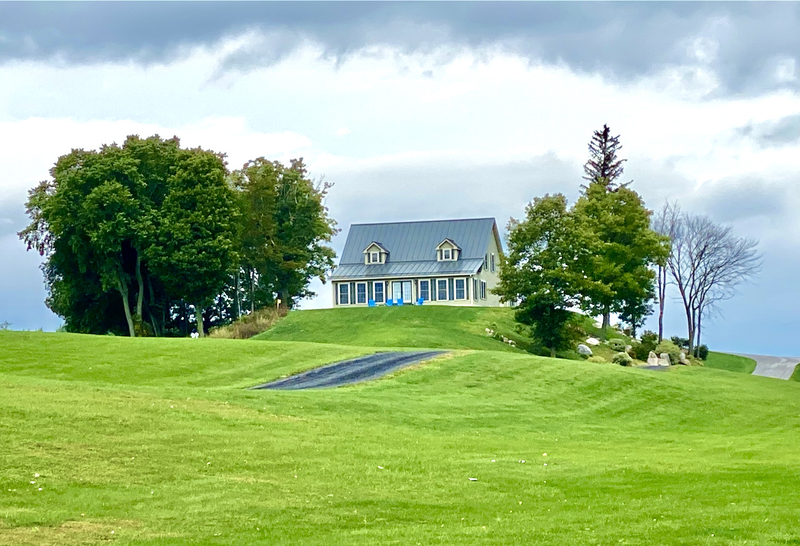I made a quick trip to Pawleys Island last week for a golf outing in Charleston, an hour away. I stayed at my wife’s and my condo in Pawleys Plantation. After playing the late, great Mike Strantz’s opus at Bulls Bay and the recently renovated Charleston Municipal Golf Course on James Island, I played my own course, Jack Nicklaus’ circa 1989 layout at Pawleys Plantation. I was both elevated and saddened by what I saw.
First the good. If there has been one glaring flaw over the years in any of the green complexes on the course, it was the 7th, an hourglass-shaped green which would not have been so bad if the hourglass didn’t run front to back, wasn’t barely 25 feet across at its middle, and didn’t feature huge bunkers on both sides. Over time, the bunkers had pulled away from the green – or, perhaps more accurately, the green had pulled back from the bunkers – making the green look, from the tee box, about the size of one of those hourglasses that come in game boxes, like Boggle. The shot, even though it is only 130 yards from the middle tees, boggled the mind and could throw any round into chaos. A miss on either side meant landing in the sand hazard with a blast across a narrow green with the other bunker waiting opposite.
But after Nicklaus visited the course to help celebrate its 30th anniversary in 2019, the club’s owners have finally attended to one of the designer’s suggestions. The back end of the hourglass has now been tripled in size from side to side, and the neck and front of the green have been roughly doubled in size. Now looking more like a butternut squash than an hourglass, this probably approximates the size of the green back when the course opened in 1989. Until it was redone recently, the 7th green at Pawleys Plantation was shaped like an hourglass, and a narrow one at that. It is now more like a butternut squash, tripled in width across the back of the green.
Until it was redone recently, the 7th green at Pawleys Plantation was shaped like an hourglass, and a narrow one at that. It is now more like a butternut squash, tripled in width across the back of the green.
The bad thing Pawleys Plantation is a common complaint about some golf community courses: The houses are too damn close to the fairways. This has virtually never been the case at Pawleys, except for the condos that line the right side of the 15th fairway. But the layout of that par four tilts to the left, away from the homes, and only big hitting slicers will reach them. Now, however, after the final large parcel of land in the community was sold, about 30 homes have been built, with a few still in construction, along the right side of the 18th fairway. Unlike other homes in the community, they are packed closely together and, more to the point, close to the sparse grouping of trees that separate them from the fairway. I noted a few out of bounds posts behind the completed homes. The homes themselves are not quite an eyesore, but the finishing hole now is a rather anti-climatic way to end a round after so many beautiful views of the marsh on the back nine, and their encroachment on the field of play is disappointing. Where once there was a wall of trees, providing a nice green background for the 17th hole, now there will be a house, the foundation already in, with newly placed out of bounds stakes closer to the back of the difficult to hit green.
Where once there was a wall of trees, providing a nice green background for the 17th hole, now there will be a house, the foundation already in, with newly placed out of bounds stakes closer to the back of the difficult to hit green.
The truly ugly part of the round at Pawleys today is that the home on that parcel of land that is farthest east is being built directly behind the 17th green. That par 3 has always been a beauty, the tee box on the old rice plantation dike, the carry entirely over marshland, the green almost a redan running front right to rear left, and directly behind the green, a wooded area forming an appropriate green wall background. But now, those woods have given way to the foundation of a home that will become a full-fledged house in two months or so. The background of trees is gone and the new out of bounds has come closer to the back of the green, meaning any shot that carries the marsh a little too aggressively will now find a worse fate awaiting it behind the green. When the USGA returns to re-handicap the course, I am betting #17 is on the scorecard as a tougher hole than it is today (currently the 16th toughest).
With the 7th green becoming easier to hit and the 17th becoming scarier, one hole at Pawleys Plantation giveth and the other hath taken away.
I write this the day after the U.S. Government announced that fully vaccinated Canadians are welcome to cross our northern borders and begin again, after 18 months, to spend money at American stores, hotels…and golf courses. Golf clubs as far away as Myrtle Beach are celebrating, given the Canadian penchant for starting their golf seasons in February.
The impact of the decision will be even greater in northern New England. During a recent monthlong stay in Vermont, I played more than a half dozen golf courses within an hour of the border. Most of their clubhouses fly Canadian flags alongside Old Glory and accept Canadian dollars. Indeed, the closer you get to the border, the greater the percentage of revenue from Canadian golfers, according to club owners. Ski resort Jay Peak, just five miles from the border and a little over an hour from Montreal, is home to the best golf course of the dozen I have played in Vermont (my review of the course here). The opening of the border just in time for the ski season will be a tremendous boon to revenues at Jay, and come the spring, the 10,000 annual rounds of golf played there in the last two years will likely double. (Look also for a rise in annual membership fees from the current ridiculously low $700 per season for weekday play.)
No one may be happier to see renewed Canadian traffic than the owner of Alburg Golf Links in the town of the same name, an hour east of Jay Peak but also about five miles from the border. I played golf at Alburg in early September (see my review), my second visit there in the past few years, and after the round I chatted with the golf pro who told me the club was for sale, along with 200 adjacent acres of land. (The golf course itself sits on about 225 acres, some with commanding views of Lake Champlain.) A ridge line runs through the attached property where some future homes will look down to the lake. About 1,700 feet of waterfront property is included in the sale.
 Lake Champlain is in full view, if not in play, on the first hole at Alburg.
Lake Champlain is in full view, if not in play, on the first hole at Alburg.
Alburg is 45 minutes from Burlington, VT, and Plattsburgh, NY – both with functional commercial airports – but the most important proximity is Montreal, about an hour away and home to 4.2 million in the metro area. I toured the Alburg property with the real estate agent who has the listing and I saw tremendous potential as a second-home golf community as well as a weekend retreat for some of those 4 million Montrealers. Cabins along parts of the golf course and single-family homes on the adjacent property would be an attractive mix; to a developer’s delight, the town of Alburg does not impose regulations on what you can build on its land and its published planning document almost begs for anything tourist related.
The entire 425-acre property, golf course and adjacent land, is listed for $2.5 million. The only home sits at the property’s highest point, with beautiful views of the golf course and the lake. For the buyer of the entire property, it is available at $495,000; I had a tour of the house and that seems like a more-than-reasonable price.
 The only home on the golf course at Alburg LInks has views from its back porch (shown) of Lake Champlain and wraparound views of the golf course.
The only home on the golf course at Alburg LInks has views from its back porch (shown) of Lake Champlain and wraparound views of the golf course.
Yes, the Alburg Golf Links property is remotely located and, yes, the golf season is short, about mid-April to end of October, but with seas rising and threatening the coasts, with wildfires driving people away from the Pacific Northwest and California, with summer temperatures (and the seemingly more intense hurricanes) becoming intolerable for many retirees in Florida, Vermont could very well be the next retirement hot spot in the U.S. Along with your golf clubs and perhaps a boat, bring a warm coat and consider taking up ice fishing. Contact me if you would like more information on Alburg Golf Links.
Page 22 of 1023























